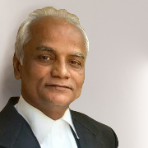Right To die: Law and Legislation
Posted On : September 23, 2023

Table of Contents
What Does Right To Die Mean?
The idea of the right to die relates to the notion that a person has the choice to end their life if they are faced with a terminal illness, excruciating pain, or any other situation when their quality of life is significantly diminished. Euthanasia and assisted suicide are two practices where a person asks for help from a doctor or a loved one to end their life in a peaceful and honorable way. These practices are frequently linked to the right to die.
Different forms of euthanasia
There are many different opinions on euthanasia, however in some nations, specific forms of the practice are allowed. The five categories of euthanasia are as follows:
-
Active Euthanasia
An intended act to shorten the life of a person is known as “active euthanasia”. It entails a deliberate attempt to end a person's life through the use of substances or an outside force, such as giving a lethal injection. Thus, it can be claimed that in the instance of active euthanasia, a step is taken against the patient to cause his or her death. -
Passive Euthanasia
In the case of passive euthanasia, all the extra treatment which is necessary for a person to survive is removed. It is intentionally letting a patient die by withholding artificial life support such as a ventilator or feeding tube. The majority of those who are subjected to it are in a persistent vegetative state (PVS). -
Voluntary Euthanasia
As the name implies, voluntary euthanasia occurs when a person chooses to terminate their life through euthanasia with their own consent or with the consent of their legal guardians. The consent of a patient should never be coerced in any way. -
Involuntary Euthanasia
According to what the phrase implies, involuntary euthanasia refers to the act of performing euthanasia on a person without that person's voluntary consent. -
Non-voluntary Euthanasia
In the instance of non-voluntary euthanasia, the patient's sickness prevents him from expressing his desire to pass away. The individual's family makes the decision to end their loved one's life on their behalf.
Right to Die: Law and Legislation
According to Section 309 of the Indian Penal Code, which also makes suicide attempts illegal, euthanasia is prohibited in India. However, the Indian Supreme Court has declared the right to die with dignity to be a basic freedom protected by the Indian Constitution's guarantees of life and personal freedom.
The Right to Die has been a divisive subject in India, with opposing viewpoints from various elements of society. On the one hand, proponents believe that individuals should have the freedom to choose when to end their suffering, while opponents claim that such a power violates the dignity of life and can be readily misused.
However, in 2011, the Indian Supreme Court made passive euthanasia acceptable under certain circumstances. Withholding medical care or other steps that could artificially extend a person's life is referred to as passive euthanasia. The court ruled that a person can write a "living will" or advance directive outlining their decision to refuse medical care should they develop a terminal illness or go into a vegetative condition.
In addition, the Supreme Court created rules to control the passive euthanasia procedure, and a medical board is appointed to assess the patient's health and determine whether delaying treatment is in their best interests. The court also ruled that, in cases when the patient is unable to make such a decision, a close relative or legal guardian should make the choice to refuse treatment.
The "Medical Treatment of Terminally Ill Patients (Protection of Patients and Medical Practitioners) Bill," which sought to legalise both passive and active euthanasia, was introduced in the Indian parliament in 2018. The legislation was later withdrawn due to resistance.
Certain Clarifications
The "right to die" can be defended in a variety of situations. Of course, the phrase might allude to a desire to remove life-supporting technology. Cruzan v. Director, Missouri Department of Health appears to have recognized the interest in doing so as having presumed constitutional status in the sense that the state must present a compelling argument for encroaching upon that interest. In any event, several states permit their residents to refuse medical care.
An additional point by way of clarification: Medical practice will work in the shadow of the law and under the impact of the law without simply following the law. Therefore, a legal system without a real or publicly acknowledged "right to die" may possibly provide room for medical decisions regarding whether to prolong life or hasten death in a quiet, covert manner, typically made in close consultation with the patient and family members.
For instance, a doctor might prescribe drugs that hasten death, permit a patient to refuse life-sustaining medications or even food and drink, or refrain from taking "extraordinary" measures. The border that appears to separate these actions from physician-assisted suicide is clearly breached in practice. It is conceivable that patients frequently exercise an unofficial "right to die" despite the fact that physician-assisted suicide is against the law.
India's Legal System Regarding the Right to Die
A number of important rulings by the Indian Supreme Court serve as the foundation for the Right to Die's legal protections in India.
The following are the main legal regulations that govern India's Right to Die:
-
Right to Refuse Medical Care
In the 1994 case of P. Rathinam v. Union of India, the right to refuse medical care and the right to a dignified death were both recognized by the Supreme Court. The court ruled that an individual has the right to decline medical treatment that could extend their life and that, in accordance with Article 21 of the Indian Constitution, everyone has the right to a dignified death. -
Passive Euthanasia
In the 2011 case of Aruna Shanbaug v. Union of India, the Supreme Court acknowledged passive euthanasia's constitutional viability. The court decided that a person who is permanently disabled and has no chance of recovery may be permitted to pass away after having life support systems turned off. The court established stringent standards for the practice and mandated that a high court bench make the decision to remove life support equipment after taking into account medical findings and a team of doctors' opinions. -
Active Euthanasia and Assisted Suicide
While passive euthanasia has received legal recognition in some situations, active euthanasia and assisted suicide are still prohibited in India. Such procedures, according to the Supreme Court, violate the sanctity of life and leave room for abuse. The court has, however, also observed that under some circumstances, turning off life support systems may cause a patient to slowly and painfully pass away, which can be interpreted as an act of intentional euthanasia. -
Directives in advance
In 2018, the Supreme Court in the case of Common Cause v. Union of India, acknowledged that it is a human right for people to make advance decisions about their medical care. The court ruled that people have the right to predetermine the medical care they want to receive in the event that they become terminally ill or are unable to communicate their choices. The court established rules for writing and carrying out advance directives and mandated that they be registered with an organisation designated by the government. -
Executors' Wills
In 2018, the Supreme Court in the case of Common Cause (A Regd. Society) v. Union of India, acknowledged the idea of a "Living Will" or "Advance Directive" that enables people to declare their wishes regarding end-of-life care. The court ruled that an individual has the right to create an advance directive stating that, in the event that they are terminally sick or in a vegetative state, they should not be placed on life support. The court also established rules for how Advance Directives should be written and executed. -
The Medical Treatment of Terminally III Patients (Protection of Patients and Medical Practitioners) Bill, 2021
The goal of the proposed legislation is to provide India's system of end-of-life care and treatment a legal foundation. It includes clauses relating to the right to refuse medical care, the right to pass away with dignity, and the conditions under which doctors can help a terminally ill patient end their life with medical assistance. -
Guidelines for the Management of End of Life Care and Decision Making (2018)
The Indian Society of Critical Care Medicine published these guidelines to help with decision-making and the management of end-of-life care. They provide advice on how to communicate with patients and their families, provide palliative care, and make decisions about end-of-life care.
The Supreme Court has, however, also ruled that active euthanasia, in which a third party intervenes to end the life of the person, is unlawful and punishable in India. According to the court, such a procedure violates the sanctity of life and is open to abuse.
Overall, India's legal system governing the right to die is complicated and calls for serious study of its legal, moral, and ethical ramifications. Active euthanasia and assisted suicide are still prohibited in India, despite the fact that passive euthanasia has been approved as permissible in some situations. The proposed legislation aims to give the nation's decision-making and end-of-life care a better legal basis.
Conclusion
The Indian Judiciary had fully disregarded euthanasia up until recently. The judiciary has made an effort to include moral and religious principles in its rulings. In India, assisted or active euthanasia is not permitted. If the right to life under article 21 includes the right to die, that was the question the judges had to decide. However, recent judgements have clarified the position with regard to it. An essential component of article 21 is the right to a dignified death, which acknowledges passive euthanasia.























